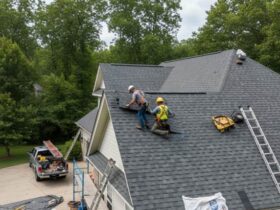Most trees handle weather, insects, and the occasional bump from a mower just fine. Then there are seasons when a tree starts sending little signals that something is off. Not dramatic at first. A patch of sparse leaves. A branch that never quite wakes up. If you catch these early, restoration can often bring the canopy back and stabilize the structure. Miss them, and problems get expensive fast. Here is a plain list of what to look for and what it might mean.
1) Thinning canopy and off-season leaf drop
If a normally full tree looks see-through, or drops leaves weeks before its neighbors, that is stress talking. Root issues, compacted soil, drought, or pests can all push a tree to shed load. Restoration often starts with a root-zone assessment, deep watering plans, soil amendments, and careful pruning to balance what the roots can support.
2) Deadwood you can spot from the sidewalk
Dead branches are not just an eyesore. They are failure points. Look for brittle, gray limbs with no buds, or branches that snap without resistance. Selective crown cleaning removes hazards while preserving healthy wood. It sounds simple. Done right, it lowers risk and channels energy to living tissue.
3) Epicormic sprouts (“suckers”) on trunks and big limbs
Those fast, upright shoots popping from the trunk or major branches are a stress signal. The tree is trying to replace lost canopy quickly. The fix is not to hack them all off at once. A restoration plan thins and trains sprouts, addresses the root cause, and rebuilds structure over a couple of seasons.
4) Bark cracks, bleeding, or cankers
Long vertical splits, oozing sap, or sunken patches in the bark point to mechanical damage, sunscald, or disease. Small wounds can seal if the tree is vigorous. Larger cankers may need targeted pruning, improved airflow, and sanitation cuts. Take photos and note dates. Progress (or decline) is easier to judge with a timeline.
5) Fungal brackets or mushrooms at the base
Shelf fungi on the trunk or mushrooms clustered at the root flare can indicate internal decay or root problems. Not every mushroom means disaster, but fruiting bodies deserve attention. A pro may recommend sounding with a mallet, resistance drilling, or a tomography scan for advanced cases. Restoration aims to reduce load, improve vigor, and, when necessary, set support or removal plans.
6) Heaving soil, leaning, or recent tilt after storms
A fresh lean, soil mounding on one side, or visible root plate movement calls for immediate evaluation. Sometimes cabling and bracing plus reduction pruning can stabilize the canopy. Sometimes the safest move is removal. The sooner you check, the more options you have.
7) Insect activity beyond “normal”
A few aphids happen. But webbing, exit holes in patterns, frass (sawdust-like debris), or dieback starting at the tips can indicate borers, caterpillars, or scale. Integrated management—beneficial insects, horticultural oils, systemic treatments where appropriate—paired with pruning can reset the balance.
8) Soil compaction and sad roots
Parking on the root zone, heavy foot traffic, or construction can squeeze the life out of soil. Signs show up as poor leaf size, chlorosis, and slow growth. Restoration might include vertical mulching, air spading to loosen soil and expose girdling roots, compost additions, and a real mulch ring (not the dreaded “mulch volcano”).
9) Bad pruning history (topping or flush cuts)
If you see flat tops, torn stubs, or big, smooth wounds cut flush with the trunk, the tree needs help. Structural restoration trains new leaders, removes weakly attached sprouts over time, and encourages proper collar-to-collar healing. Patience is key. One good season will not fix years of bad cuts, but steady work can.
Quick self-check you can do this week
Walk the drip line. Look for mushrooms, heaving soil, or girdling roots.
Scan the crown for deadwood, crossing branches, and thin spots.
Inspect the trunk for cracks, cankers, or bleeding.
Note insects, sticky honeydew, or sooty mold on leaves.
Measure mulch: 2–3 inches deep, kept off the trunk flare.
FAQs
Can a severely damaged tree be saved?
Sometimes. If the root system and main structure are sound, staged pruning, soil rehab, and pest control can turn things around. Advanced decay or a compromised root plate narrows options.
How long does restoration take?
Think in seasons, not weekends. Many plans run 12–36 months with check-ins after storms and during peak growth.
Is fertilizing always part of restoration?
Not always. If soil is compacted or water is wrong, nutrients won’t solve the core problem. Fix the root zone first, then feed if tests support it.
When should I call a professional?
If you see lean, big dead limbs, fungal brackets, or damage after construction, get expert eyes on it. Safety comes first.
A quiet closing thought. Trees do not ask for much. Right soil, clean structure, and space to breathe. Catch the signs early and a restoration plan can bring a tired canopy back to life—steadily, safely, and with fewer surprises next storm season.
This post was written by a professional arborist at Tree Trimming Clearwater Florida. Robert Miller is the owner of Arbor Wise Professional Tree Care, a locally owned and operated tree service company that offers superb lawn care by the most experienced Arborists. Arborwise Tree Services is a tree removal company that offers stump removal, tree pruning, stump grinding, fertilization, and tree restoration. We have an extraordinary lawn care industry notoriety covering the Pinellas county area.











